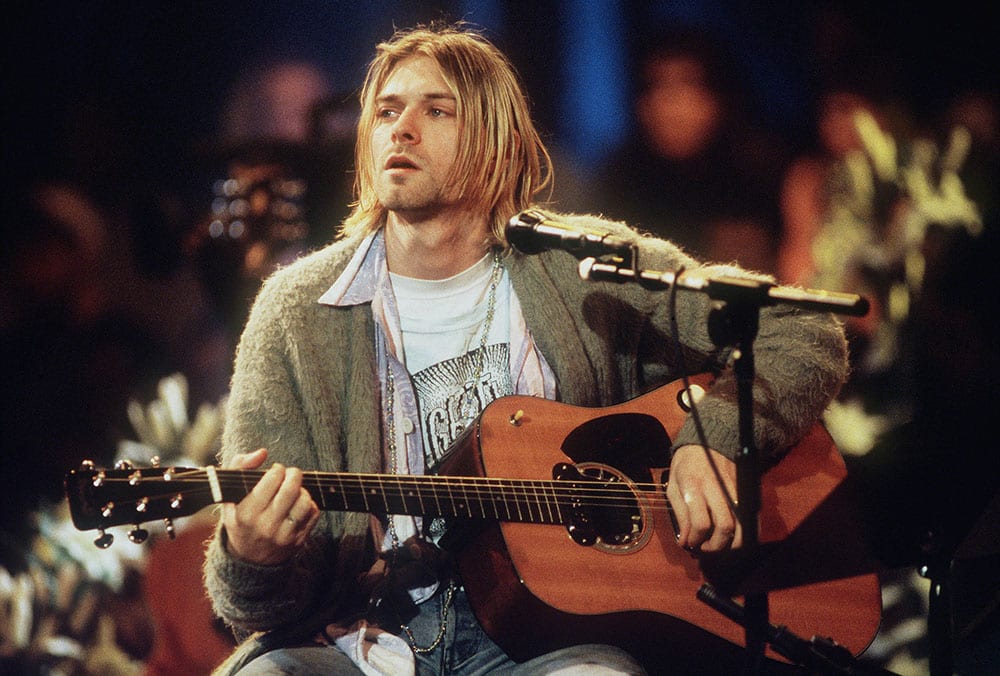
On April 5th, 1994, one of the most talented artists of a generation, Kurt Cobain, took his own life. He was at the height of his fame and had reached levels of success most could never dream of, so why did he end it all? The answer has roots in both addiction and depression.
Suicide, depression, and addiction have a closely connected relationship.
Over 90% of people who complete suicide suffer from depression, have a substance abuse disorder, or both. The two create a vicious cycle that can lead to suicide. Kurt Cobain’s final days are a saddening insight into the mental health issues that surround addiction. People suffering from severe depression, caused by ailments such as Major Depression, Bipolar Disorder (which Cobain was diagnosed with), Obsessive Compulsive Disorder, Dissociative Identity Disorder, and other conditions, often turn to substance abuse to numb their pain.
For Cobain, his depression started young, he claimed his parent’s divorce when he was nine had a strong effect on him.
He spent his teenage years taking drugs and living out acts of teenage rebellion. In his youth his personal phrase, “I hate myself and want to die” was written in his journals and carried into his music career where he said it to journalists and even planned to use it as an album title. Later, in his adult years, his depression would become diagnosed as Bipolar Disorder. Cobain’s depression and chronic pain from an undiagnosed stomach condition led him to start using prescription pills and ultimately pick up heroin in 1986, from which he struggled with addiction for years before finally getting help in 1992. Unfortunately, his sobriety did not last long and he relapsed just a few months after leaving rehab. The following year he survived a heroin overdose that nearly took his life.
On March 3rd, 1994, he overdosed again.
This time from taking large amounts of Rohypnol. He was in Rome and was rushed to the hospital, where he spent five days in a coma. Friends believed it was a failed suicide attempt but his management insisted it was an accident. Later that month, his wife along with Nirvana bassist Krist Novoselic, and several friends staged an intervention at his home in Seattle. Cobain agreed to go to rehab and checked into a center in Los Angeles five days later. But he only spent two days there before he told staff members he was stepping outside to smoke a cigarette, scaled a six foot high brick wall and disappeared. He was not seen again until his body was found on April 8th, 1994 at his home in Seattle, having committed suicide three days earlier. The coroner found large amounts of heroin and valium in his system.

Kurt Cobain’s tragic death shows us how addiction, depression, and suicide can affect anyone. It does not discriminate by class, race, or creed and no amount of success, fame, acclaim, or wealth can make these challenges disappear. For Cobain, the addiction/depression cycle became too much to bear. Stopping that vicious cycle can start with breaking out of active addiction. Getting the help you need can stop the common feelings of shame, guilt, sadness, and frustration that typically come with active addiction and help you on the path to healing. If you or a loved one are struggling with active addiction, please do not hesitate to contact one of our representatives at Harmony Recovery Center. Our kind and supportive staff are here to help. Call us at (704) 368-1131.
Sources
Kessler RC, Borges G, Walters EE. Prevalence of and risk factors for lifetime suicide attempts in the National Comorbidity Survey. Arch Gen Psychiatry. 1999;56:617-626. Harris EC, Barraclough B. Suicide as an outcome for mental disorders. A meta-analysis. Br J Psychiatry. 1997;170:205-228. Cavanagh JT, Carson AJ, Sharpe M, Lawrie SM. Psychological autopsy studies of suicide: a systematic review [published correction appears in Psychol Med. 2003;33:947]. Psychol Med. 2003;33:395-405. Addictive Disorders & Their Treatment: June 2019 – Volume 18 – Issue 2 – p 99-104 doi: 10.1097/ADT.0000000000000155